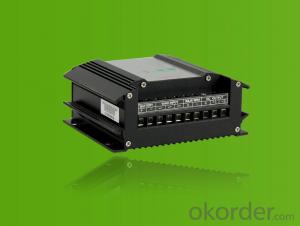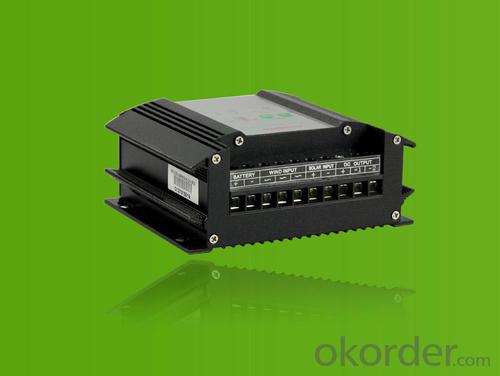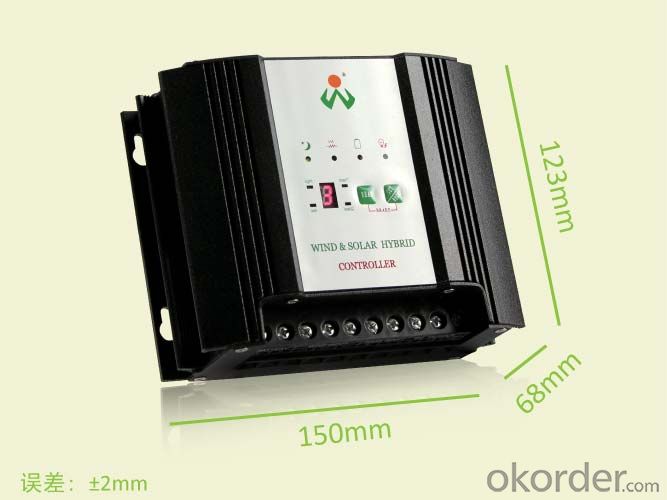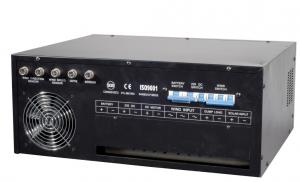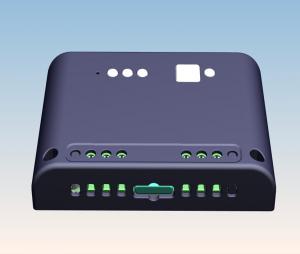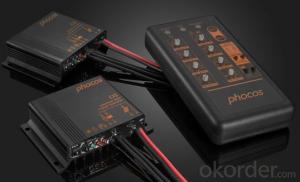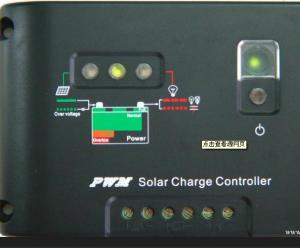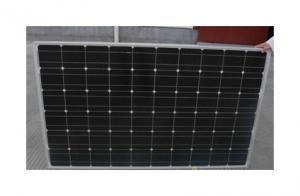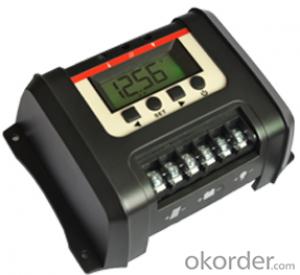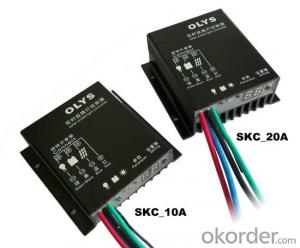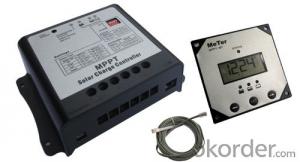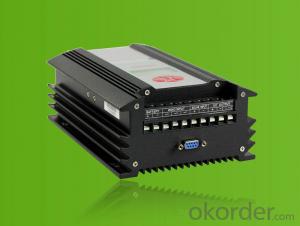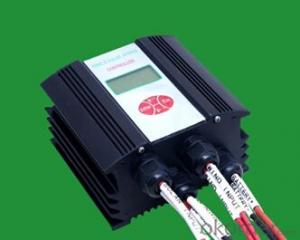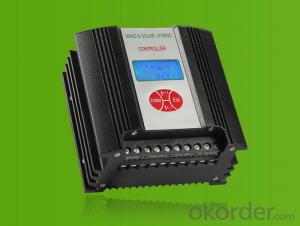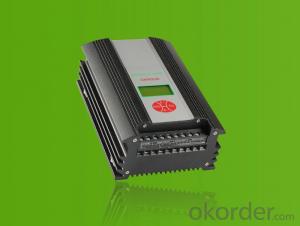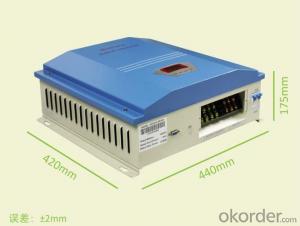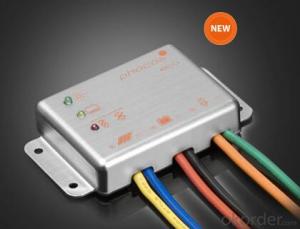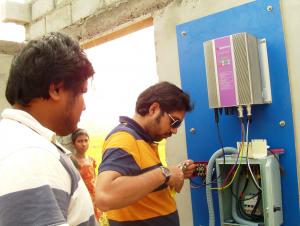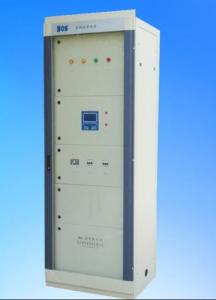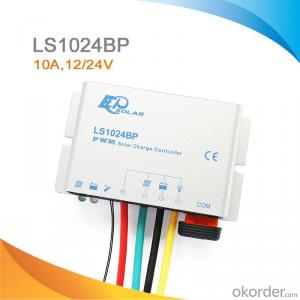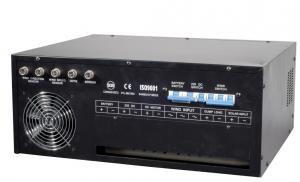Solar Controllers Buyers:Street Light Controller 24V Economical Wind Solar Hybrid
- Loading Port:
- Shanghai
- Payment Terms:
- TT or LC
- Min Order Qty:
- 1 unit
- Supply Capability:
- 10000 unit/month
OKorder Service Pledge
OKorder Financial Service
You Might Also Like
I. PRODUCT INTRODUCTION
The wind/solar hybrid street light controller is specially designed for high-end small-scale wind/solar hybrid system and especially suitable for wind/solar hybrid street light system and wind/solar hybrid monitoring system. It can simultaneously control wind turbine and solar panel and transform the wind and solar energy into electricity for the DC load use, with excess energy stored into batteries. Varieties of appearance and function design, which is flexible to meet the requirements of different customers.
II. PERFORMANCE FEATURES
Superior military-grade components to ensure the product stability.
Perfect protection function, thus the system has higher reliability.
LED、digits indicator for freely check and set various of status parameters.
Voltage limiting and current-limiting charge mode ensures battery in the best charging status.
Two DC Load output, light-control, time-control, constant output, and multiple output control mode selection
PWM stepless unload mode, which burn the excess power into Dump load, making the battery charging in best status.
High quality aluminum alloy appearance, with small size and good cooling effect.
III. APPLICATION AREAS
Stand alone wind/solar hybrid power station.
Stand alone domestic household wind/solar hybrid power system.
Mobile Communication base stations, expressway and other non-residential regions.
Coastal islands, remote mountainous, border posts for regions shortage of or without electricity.
Government demonstration projects, landscape lighting project, street light project etc.
IV. 24V TECHNICAL PARAMETERS
Product Model | WWS03-24-B00D | WWS04-24-B00D | WWS06-24-B00D |
Rated Battery Voltage | 24V | 24V | 24V |
Rated Wind Turbine Input Power | 300W | 400W | 600W |
Wind Turbine Maximum Input Power | 450W | 600W | 900W |
Wind Turbine Brake Current | 15A | 20A | 30A |
Rated solar input power | 200W | ||
Wind Turbine Charge Shutoff Voltage | 29V | ||
Wind Turbine Charge Recovery Voltage | 26.4V | ||
Battery Under Voltage Shutoff | 21.6V | ||
Battery Under Voltage Recovery | 24V | ||
Input over voltage shutoff | 32V | ||
PV Voltage Of Light-Control On | 2V | ||
PV Voltage Of Light-Control Off | 3.2V | ||
Load 1 and load 2 rated output current | 10A | ||
Load 1 output control mode | Light-Control On and Light-Control Off | ||
Load 2 output control mode | Light-Control On and Time-Control 5 hours | ||
Dumpload control mode | PWM | ||
Display mode | LED digits indicator | ||
Cooling | Aluminium alloy shell radiating | ||
Protection Level | IP53(Indoor) | ||
Quiescent current | ≤20 mA | ||
Display content | Over-voltage, Over-discharge, Overload, Short-circuit, Night etc. | ||
Protection function | Solar reverse charge protection , Solar reverse connection protection, Battery over charge protection, Battery over discharge protection, Battery reverse connection protection, Over Load protection, Short-circuit protection, Lightning protection, Wind turbine current limiting, Wind turbine automatic brake and manual brake. | ||
Ambient temperature | -20~+55℃ | ||
Ambient Humidity | 0~93%, without condensing | ||
Working aititude | ≤4000m | ||
Dimension | 125×152×62mm | ||
Net weight | 0.75kg | ||
In order to serve our customers better, our company can adjust parameters configuration according to customer’s requirement. | |||
- Q: Can a solar controller be used with a solar-powered charging station for mobile devices?
- Yes, a solar controller can be used with a solar-powered charging station for mobile devices. A solar controller regulates and optimizes the incoming solar power, ensuring that the charging station receives a stable and efficient supply of energy. It helps prevent overcharging and protects the mobile devices from voltage fluctuations, making it a crucial component for the proper functioning of a solar-powered charging station.
- Q: Can a solar controller be used with solar panels that are connected to a charge controller?
- Yes, a solar controller can be used with solar panels that are connected to a charge controller. In fact, it is a common setup in solar power systems. The charge controller is responsible for regulating and controlling the charging process of the batteries connected to the solar panels. On the other hand, a solar controller, also known as a solar charge controller or solar regulator, is designed to regulate the voltage and current coming from the solar panels to ensure that it is suitable for charging the batteries. The solar controller plays a crucial role in protecting the batteries from overcharging and over-discharging, which can greatly extend their lifespan. It also helps to maximize the efficiency of the solar panels by preventing any mismatch between the panel's output and the battery's charging requirements. By using a solar controller in conjunction with a charge controller, you can ensure that your solar panels are operating optimally and your batteries are properly charged, resulting in a more efficient and reliable solar power system.
- Q: Are there any safety precautions I should take when using a solar controller?
- Yes, there are several safety precautions to consider when using a solar controller. Firstly, it is important to ensure that the solar controller is installed and wired correctly according to the manufacturer's instructions. This includes connecting the solar panels and batteries properly and securely. Additionally, it is crucial to use proper grounding techniques and follow electrical safety guidelines to prevent electrical shocks or fires. Furthermore, it is recommended to regularly inspect the solar controller for any signs of damage or wear, and to keep it away from water or other potentially hazardous environments. Lastly, it is advisable to familiarize yourself with the solar controller's manual and safety guidelines to ensure safe and efficient operation.
- Q: What is the role of a solar controller in preventing overcurrent in the solar panel system?
- The role of a solar controller in preventing overcurrent in a solar panel system is crucial for maintaining the safety and optimal functioning of the system. A solar controller, also known as a charge controller, is responsible for regulating the flow of current from the solar panels to the battery bank or electrical load. One of the main functions of a solar controller is to prevent overcharging of the batteries. Solar panels generate electricity from the sun, and if not properly regulated, they can produce more current than the battery bank can handle. This excess current can lead to overcharging, which can damage the batteries and reduce their lifespan. To prevent overcurrent, a solar controller monitors the voltage of the battery bank and adjusts the charging current accordingly. When the batteries reach their maximum voltage level, the solar controller reduces the charging current or completely disconnects the solar panels from the battery bank, preventing any further flow of current. This helps to maintain a safe and optimal charging level for the batteries, ensuring their longevity and performance. Furthermore, a solar controller also protects the solar panels themselves from overcurrent. In situations like partial shading, a phenomenon known as "hot spots" can occur, where certain sections of the solar panels receive less sunlight than others. This can lead to an imbalance in the current flow and cause overcurrent in those specific areas, potentially damaging the solar panels. Solar controllers are equipped with various protective features, such as overcurrent protection, short-circuit protection, and reverse polarity protection, to safeguard the solar panels from these issues. They constantly monitor the current flow from the panels and disconnect them if any abnormalities are detected, preventing any potential damage. In summary, the role of a solar controller in preventing overcurrent in a solar panel system is to regulate the charging current to the battery bank, preventing overcharging and damage to the batteries. Additionally, it protects the solar panels from overcurrent and potential damage caused by shading or other irregularities. This ensures the longevity, safety, and optimal performance of the solar panel system.
- Q: How does a solar controller handle low voltage disconnect for battery protection?
- A solar controller handles low voltage disconnect for battery protection by constantly monitoring the battery voltage. When the voltage drops to a predetermined threshold, typically around 11.5 volts, the controller automatically disconnects the load from the battery. This prevents the battery from being over-discharged, which can lead to permanent damage and reduced lifespan. Once the battery voltage rises above a certain level, usually around 12.6 volts, the controller re-connects the load, ensuring that the battery remains protected and operational.
- Q: How does a solar controller handle battery low voltage recovery?
- A solar controller handles battery low voltage recovery by monitoring the voltage level of the battery bank. When the voltage drops below a certain threshold, typically around 11.5 to 11.8 volts for a 12-volt system, the solar controller initiates a recovery process. During recovery, the solar controller reduces the load on the battery bank by disconnecting or reducing the power to non-essential loads. This helps to prevent further draining of the battery and allows it to recharge more efficiently. Simultaneously, the solar controller activates the solar panels to start charging the battery bank. It regulates the charging process by controlling the amount of current flowing from the panels to the batteries. The controller ensures that the charging current is within safe limits to avoid overcharging and damaging the batteries. As the battery voltage gradually increases, the solar controller continuously monitors the charging process. Once the battery reaches a predefined voltage level, typically between 13.5 to 14.5 volts for a 12-volt system, the controller switches to a float or maintenance charging mode. In this mode, the controller reduces the charging current to a lower level, preventing overcharging while keeping the battery fully charged. In summary, a solar controller handles battery low voltage recovery by reducing the load on the battery, activating the solar panels for charging, and regulating the charging process to restore the battery voltage to a safe and optimal level.
- Q: How does a solar controller handle shading or partial obstruction of solar panels?
- A solar controller handles shading or partial obstruction of solar panels by employing a technique called Maximum Power Point Tracking (MPPT). MPPT is a technology used to maximize the power output of a solar panel by continuously adjusting the voltage and current to maintain the panel at its optimal operating point. When a solar panel is partially shaded or obstructed, the amount of sunlight reaching the panel is reduced, leading to a decrease in power generation. This can significantly impact the overall performance of the solar system. However, a solar controller with MPPT capability can mitigate these effects and ensure the highest possible power output. MPPT-enabled solar controllers employ advanced algorithms and circuitry to constantly monitor the voltage and current of the solar panel. By actively tracking the panel's maximum power point, the controller adjusts the operating conditions to maximize the power output, even in the presence of shading or partial obstruction. When shading occurs on a solar panel, the MPPT controller detects the changes in voltage and current and adjusts the operating point accordingly. It dynamically finds the new maximum power point and maintains the panel's output at or near its optimal level, compensating for the shaded areas. This allows the system to extract as much energy as possible from the available sunlight, ensuring the highest efficiency and power generation. Additionally, some advanced MPPT controllers also employ partial shading algorithms that can identify the specific shaded areas on the panel and allocate power generation resources accordingly. These algorithms may reconfigure the panel's connection or adjust the electrical characteristics to bypass the shaded areas, further optimizing the power output. In summary, a solar controller with MPPT capability effectively handles shading or partial obstruction of solar panels by continuously adjusting the operating conditions to maximize power output. This ensures that the solar system generates the highest amount of energy possible, even in less-than-ideal conditions.
- Q: What is the purpose of the battery temperature sensor on a solar controller?
- The battery temperature sensor on a solar controller has the important task of monitoring and regulating the temperature of the battery linked to the solar system, which is crucial for maintaining the battery's efficiency and lifespan. To accomplish this, the battery temperature sensor measures the battery's temperature and transmits this information to the solar controller. The controller then utilizes this data to make adjustments to the battery's charging and discharging parameters, ensuring that it performs optimally and remains protected. Temperature has a significant impact on the chemical reactions that take place inside the battery, and extreme temperatures can greatly affect its overall capacity and lifespan. If the battery becomes too hot, it may experience accelerated degradation or even thermal runaway, resulting in permanent damage. Conversely, if the battery becomes too cold, its internal resistance increases, diminishing its ability to efficiently deliver power. By continuously monitoring the battery's temperature, the solar controller can modify the charging voltage and current to prevent overcharging or over-discharging, both of which can be damaging. It can also adjust the charging algorithm to optimize the charging process based on the temperature conditions, ensuring that the battery operates within a safe temperature range. In addition to safeguarding the battery, the temperature sensor also enhances the overall efficiency of the solar system. By adjusting the charging parameters according to the temperature, the solar controller can maximize the charging efficiency, ensuring that the battery is charged effectively without wasting excess energy or subjecting the battery to unnecessary stress. In conclusion, the battery temperature sensor on a solar controller serves a critical purpose by monitoring and regulating the battery's temperature, safeguarding its longevity, and optimizing the performance and efficiency of the solar system.
- Q: How does a solar controller prevent short circuits in the solar panel system?
- A solar controller prevents short circuits in the solar panel system by monitoring the voltage and current flowing through the system. It regulates the charging process and ensures that the solar panels do not exceed their maximum power output, thus preventing any excessive current flow that could potentially cause a short circuit. Additionally, the controller may have built-in protection mechanisms such as fuses or circuit breakers, which further safeguard the system against short circuits.
- Q: Can a solar controller be used with solar panels that are connected to a solar security system?
- Solar panels connected to a solar security system can indeed be used with a solar controller. The solar controller plays a vital role in a solar power system by regulating the voltage and current that flows between the solar panels and the battery or load. Its main function is to optimize the efficiency of the solar panels while safeguarding the battery against overcharging or undercharging. In the context of a solar security system, the solar controller takes charge of managing the power generated by the solar panels and supplying it to the security system or charging the backup battery. By doing so, it ensures a stable power supply for the security system, even in low light conditions or periods of high power consumption. Consequently, it is highly recommended to use a solar controller alongside solar panels in any solar-powered application, including solar security systems.
Send your message to us
Solar Controllers Buyers:Street Light Controller 24V Economical Wind Solar Hybrid
- Loading Port:
- Shanghai
- Payment Terms:
- TT or LC
- Min Order Qty:
- 1 unit
- Supply Capability:
- 10000 unit/month
OKorder Service Pledge
OKorder Financial Service
Similar products
Hot products
Hot Searches
Related keywords
